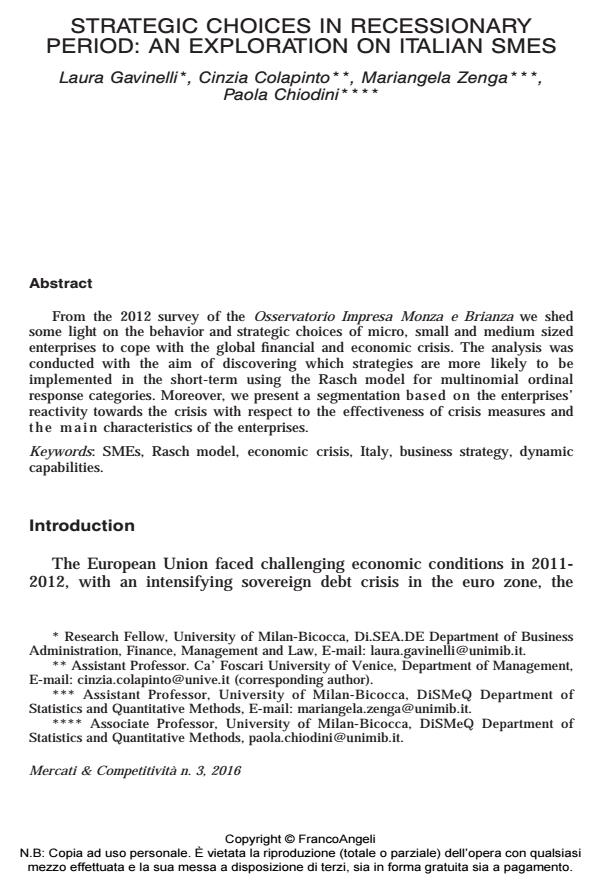Strategic choices in recessionary period: an exploration on italian smes
Journal title MERCATI & COMPETITIVITÀ
Author/s Laura Gavinelli, Cinzia Colapinto, Mariangela Zenga, Paola Chiodini
Publishing Year 2016 Issue 2016/3
Language English Pages 24 P. 135-158 File size 552 KB
DOI 10.3280/MC2016-003008
DOI is like a bar code for intellectual property: to have more infomation
click here
Below, you can see the article first page
If you want to buy this article in PDF format, you can do it, following the instructions to buy download credits

FrancoAngeli is member of Publishers International Linking Association, Inc (PILA), a not-for-profit association which run the CrossRef service enabling links to and from online scholarly content.
From the 2012 survey of the Osservatorio Impresa Monza e Brianza we shed some light on the behavior and strategic choices of micro, small and medium sized enterprises to cope with the global financial and economic crisis. The analysis was conducted with the aim of discovering which strategies are more likely to be implemented in the short-term using the Rasch model for multinomial ordinal response categories. Moreover, we present a segmentation based on the enterprises’ reactivity towards the crisis with respect to the effectiveness of crisis measures and the main characteristics of the enterprises.
Keywords: SMEs, Rasch model, economic crisis, Italy, business strategy, dynamic capabilities
Laura Gavinelli, Cinzia Colapinto, Mariangela Zenga, Paola Chiodini, Strategic choices in recessionary period: an exploration on italian smes in "MERCATI & COMPETITIVITÀ" 3/2016, pp 135-158, DOI: 10.3280/MC2016-003008